If you enjoy this post, please hit the ‘like’ button - it’s free and it helps others discover my writing.
“How precious are the flowers of mid-winter!” wrote Vita Sackville-West in January 1950. “Not the hot-house things… but the genuine toughs that for some strange reason elect to display themselves out-of-doors at this time of year.”
Vita was rather a ‘genuine tough’ herself. When I wanted to feature a formidable lady gardener in my third murder mystery, set at the 1923 Chelsea Flower Show, Vita Sackville-West came immediately to mind.
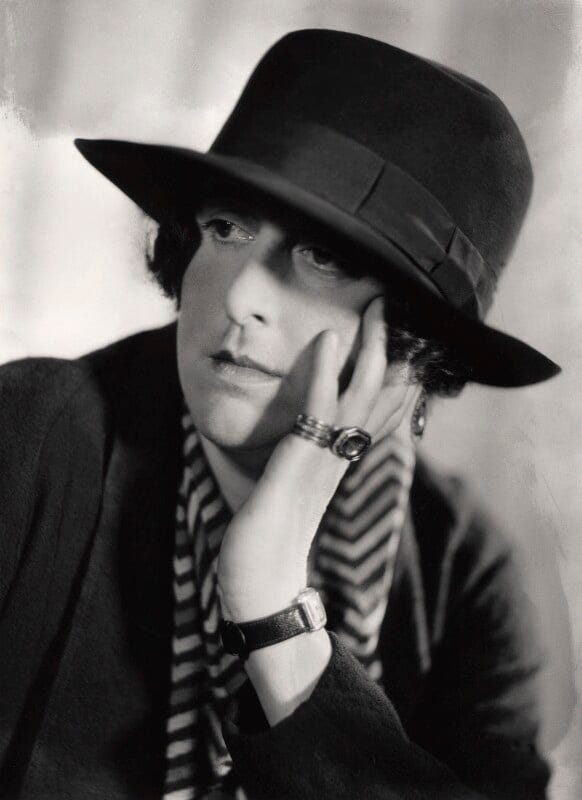
I knew her firstly as a writer, having very much enjoyed her novel of late-life rebellion All Passion Spent. I’d seen swash-buckling photographs of her dressed in breeches and knee-high laced boots, and heard tales of her passionate love affairs with her schoolfriends Rosamund Grosvenor and Violet Keppel, with whom she ran away to France, dressed as a man and passing as her husband.
I’d read about her surprisingly successful marriage to the open-minded (and also bisexual) Harold Nicolson, a diplomat. And of course I knew about her intense but complex relationship with Virginia Woolf, whose time-travelling, shape-shifting hero Orlando was inspired by Vita.
If she was good enough as a model for Woolf, she was clearly good enough for me. I arranged a trip to Sissinghurst, Vita and Harold’s garden in Kent, with Alison, a friend and garden designer. Alison also loaned me Vita’s book of gardening wisdom, In Your Garden (quoted above), a year-round compendium taken from Vita’s columns of the same name in the Observer newspaper.
The displays at Sissinghurst, and the records left by Vita in her book Sissinghurst: The Creation of a Garden, made Vita’s toughness plain. When she and Harold arrived at Sissinghurst Castle with their two young sons in 1930, the place was a ruin. They camped in out-houses and dilapidated cottages, without electricity or running water. With admirable firmness of purpose, Vita insisted that her writing room be completed first.
But oh! What a writing room. A writing room to make a novelist kick a first edition of Orlando through a window. Half-way up what’s left of Sissinghurst castle’s tower, with views across the gardens and the Kent weald, a fireplace and Persian rugs on the floor, bookshelves heaving with leather bound volumes, blue porcelain from her travels in Tehran and a day bed to languish on… It was a perfect retreat.
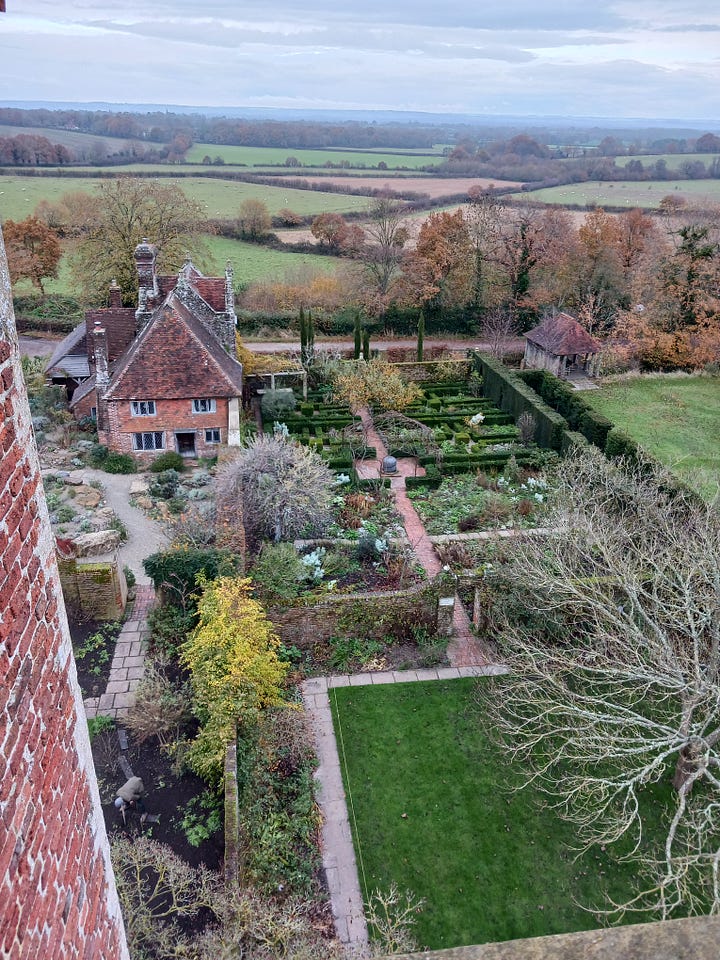
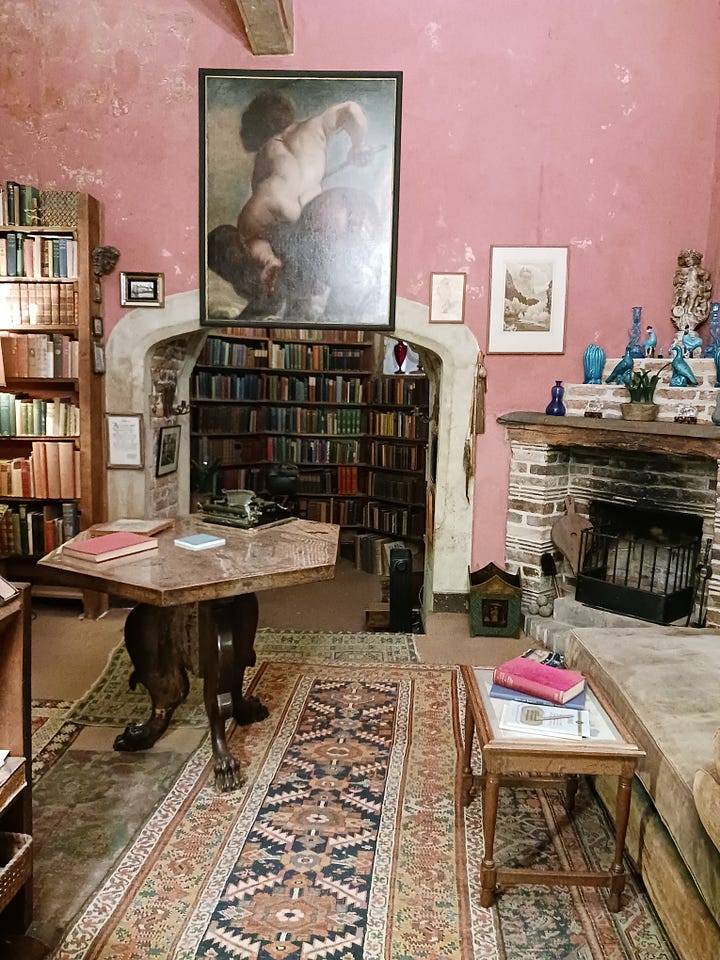
Our visit, because of the timing of my book research and writing schedule, was in the winter. But even so, the ‘bones’ of the Sissinghurst garden were clear and elegant: the square garden rooms enclosed by clipped yew hedges, the orchard and nuttery with their statuary, and of course the famed White Garden (rather green at this time of year).
Vita and Harold designed and worked on the gardens together, a joint enterprise that seemed as important to Vita as their two sons. Sissinghurst Castle dates from Elizabethan times. It was to Vita a replacement for her childhood family home, the equally ancient but much larger Knowle House and deer park. Vita’s inability to inherit Knowle because of her sex (it went to a male cousin) was a source of great pain throughout her life.
The Observer column, which she wrote up until a few years before her death, made Sissinghurst’s gardens world-famous. It also helped pay for her sons’ school fees and for the upkeep of Sissinghurst, after Harold’s diplomatic career came to an end.
Her columns trace the development of her horticultural enthusiasms, and shed light on garden fashions of the time. This was useful when I wrote about a feud between two gardening neighbours, one of whom embraced the exotic imports of the plant hunters (see previous post) while the other insisted that exotics were terribly naff, and native species in traditional English cottage gardens were far more tasteful.
In 1950, Vita began a huge trend for gardens with an elegantly restrained colour palette. She wrote: “It is amusing to make one-colour gardens… For my own part I am trying to make a grey, green and white garden. This is an experiment which I ardently hope may work, although I doubt it. One’s best ideas seldom play up in practice to one’s expectations.’
She was proved triumphantly wrong in her doubts about the White Garden, but I wonder if she also felt like that about writing. The ideas that shimmer in one’s mind are so very hard to transfer onto the page.
Once my story was underway, Death At Chelsea’s lady gardener Constance Hall, and her garden at the fictional Hawkshill Manor, took on their own life and characteristics. Mrs Hall isn’t Vita, and her Chelsea Flower Show ‘Himalayan Valley Garden’ bears no resemblance to Sissinghurst. However, my visit to the fabled gardens and Vita’s writing tower was an invaluable way to stoke my imagination. I hope some of Vita’s self-belief and toughness (as well as her penchant for wearing men’s clothes to garden) transferred themselves to the redoubtable Mrs Constance Hall.
Intrigued by Death At Chelsea? Why not find out more?
Research tip
There’s nothing like a field trip to stimulate the imagination and enrich your research, even if you don’t end up using all (or any) of what you’ve learned. And if you can find an expert to take along with you, that’s even better! As well as Sissinghurst, I visited Chelsea Physic Garden, where I made a beeline for the poisonous plants collection, and Chelsea Royal Hospital, where the flower show is held every May.
Favourite research find
Vita’s tower writing room became something of an obsession. When I got home, I reorganised my tiny study to squeeze in a velvet daybed, which had previously been under-used in the sitting room, and arrange some of my favourite bits and bobs on the windowsills. I try to keep fresh flowers in here (currently sweet-smelling paperwhite narcissus, very much a White Garden theme). I can’t do much about it not being in a tower, and a radiator is a poor substitute for a fireplace, but that’s what imagination is for.
If you enjoyed this post, please hit the ‘like’ button - it’s free and it helps others discover my writing.





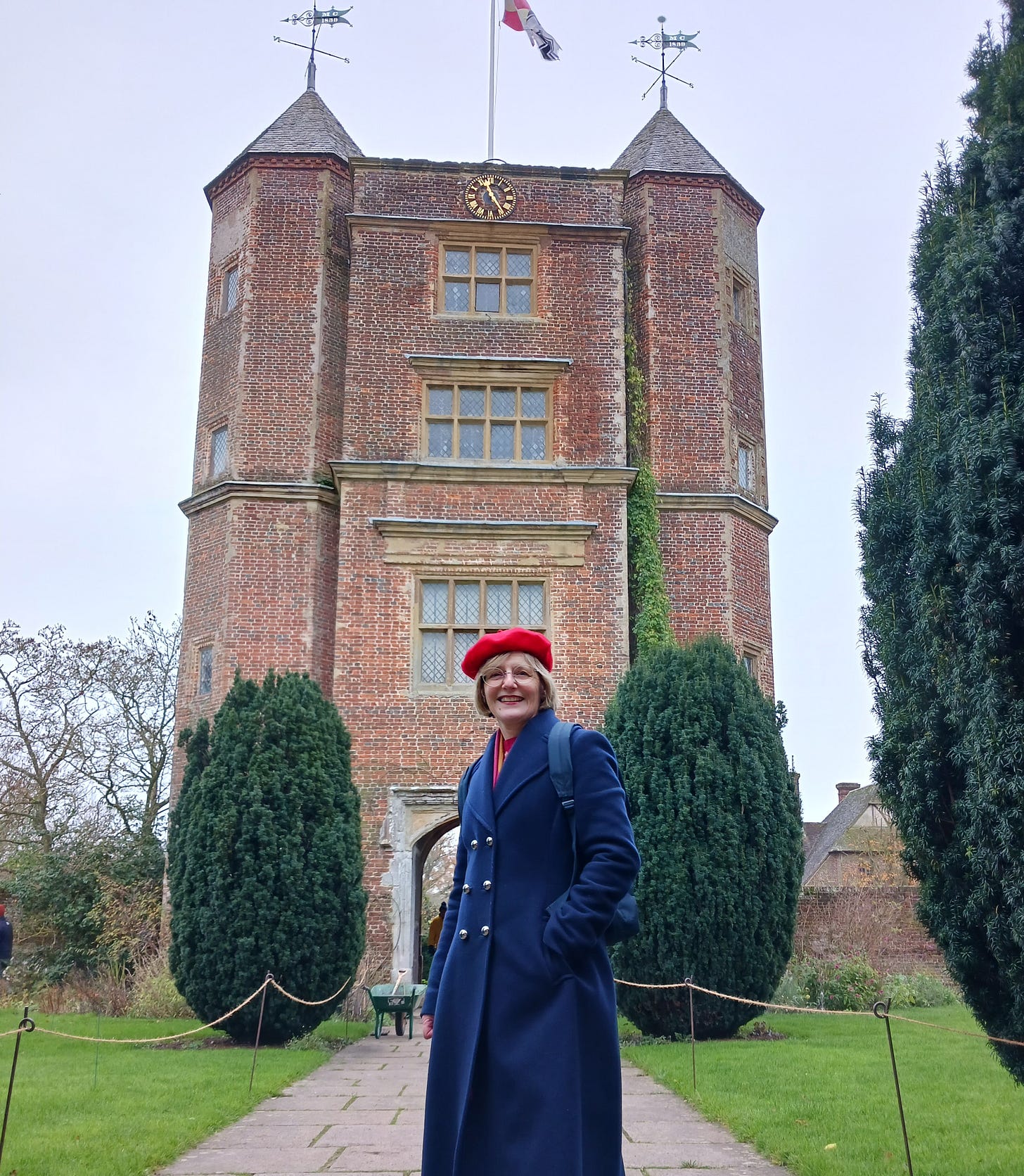
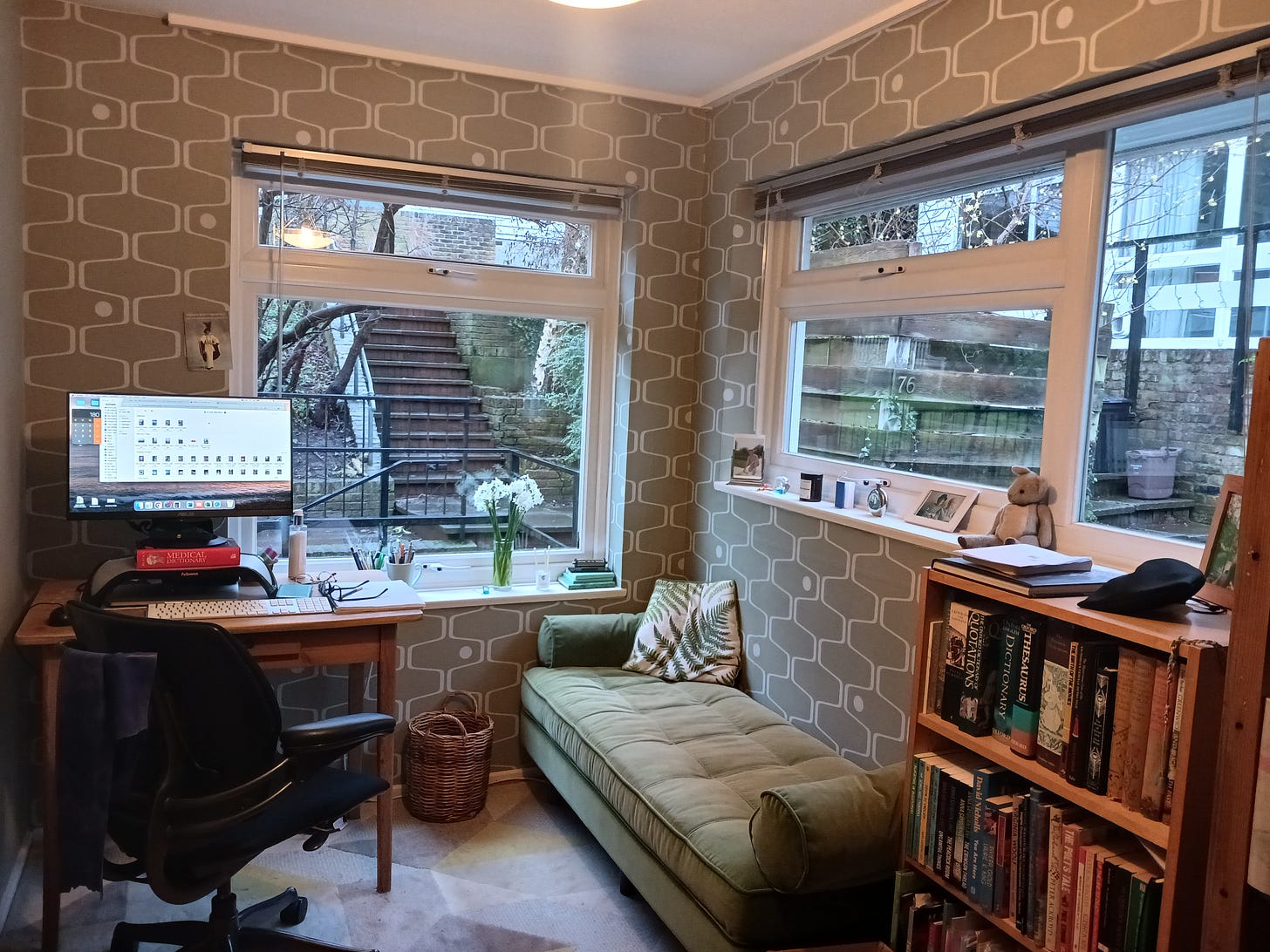

I loved the TV adaptation of "Portrait of a Marriage" - Janet McTeer striding around in britches and riding boots... If I hadn't just come out, it would have turned me gay
I love visiting authors' homes, grand or humble. I'd love to visit Sissinghurst; it looks magnificent. Likely the closest thing to it here in the U.S. is Edith Wharton's estate, The Mount, in Lenox, MA. There are gardens there as well but nothing to compare with Vita's. Thank you for this uplifting post, Anna!